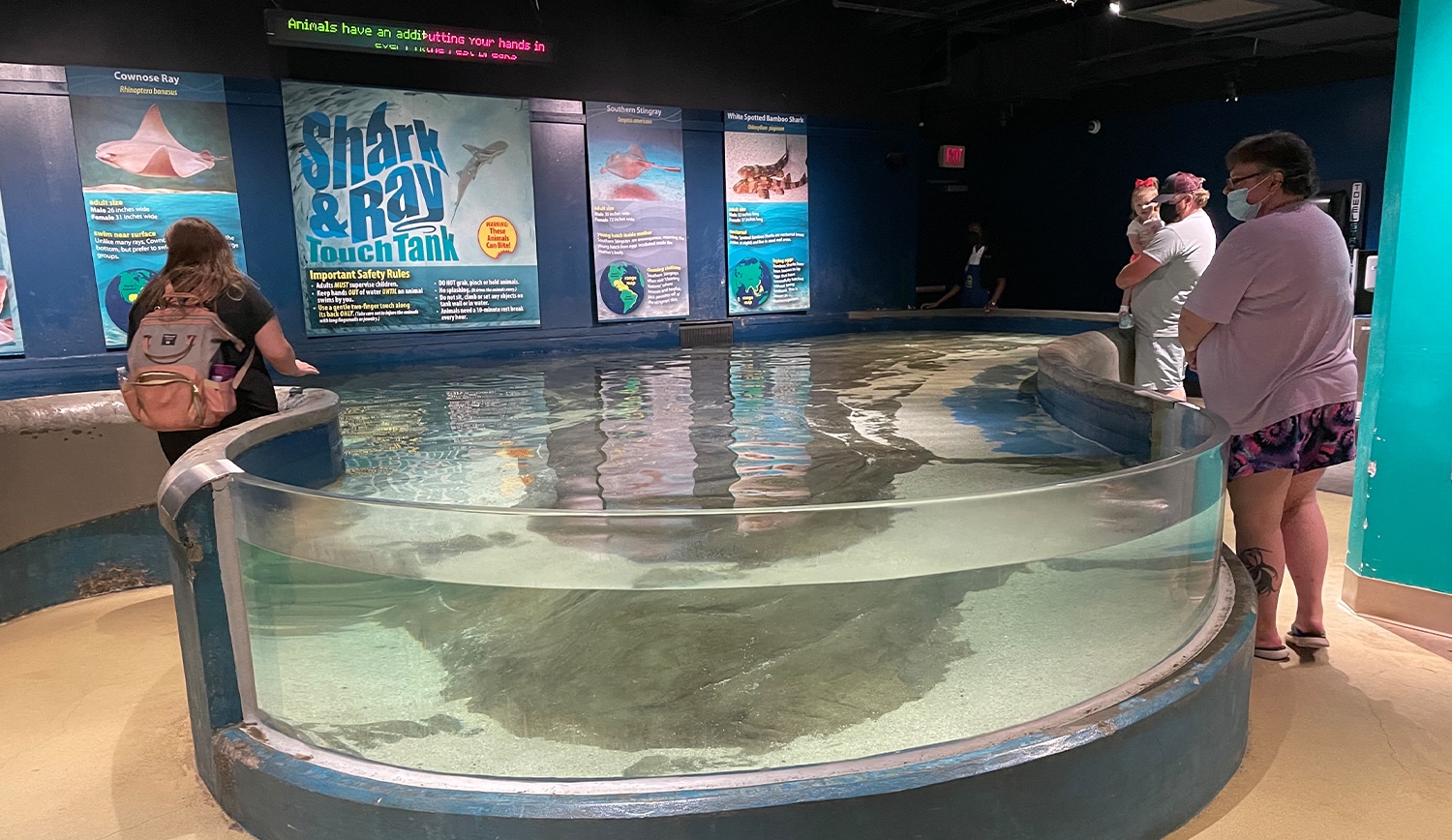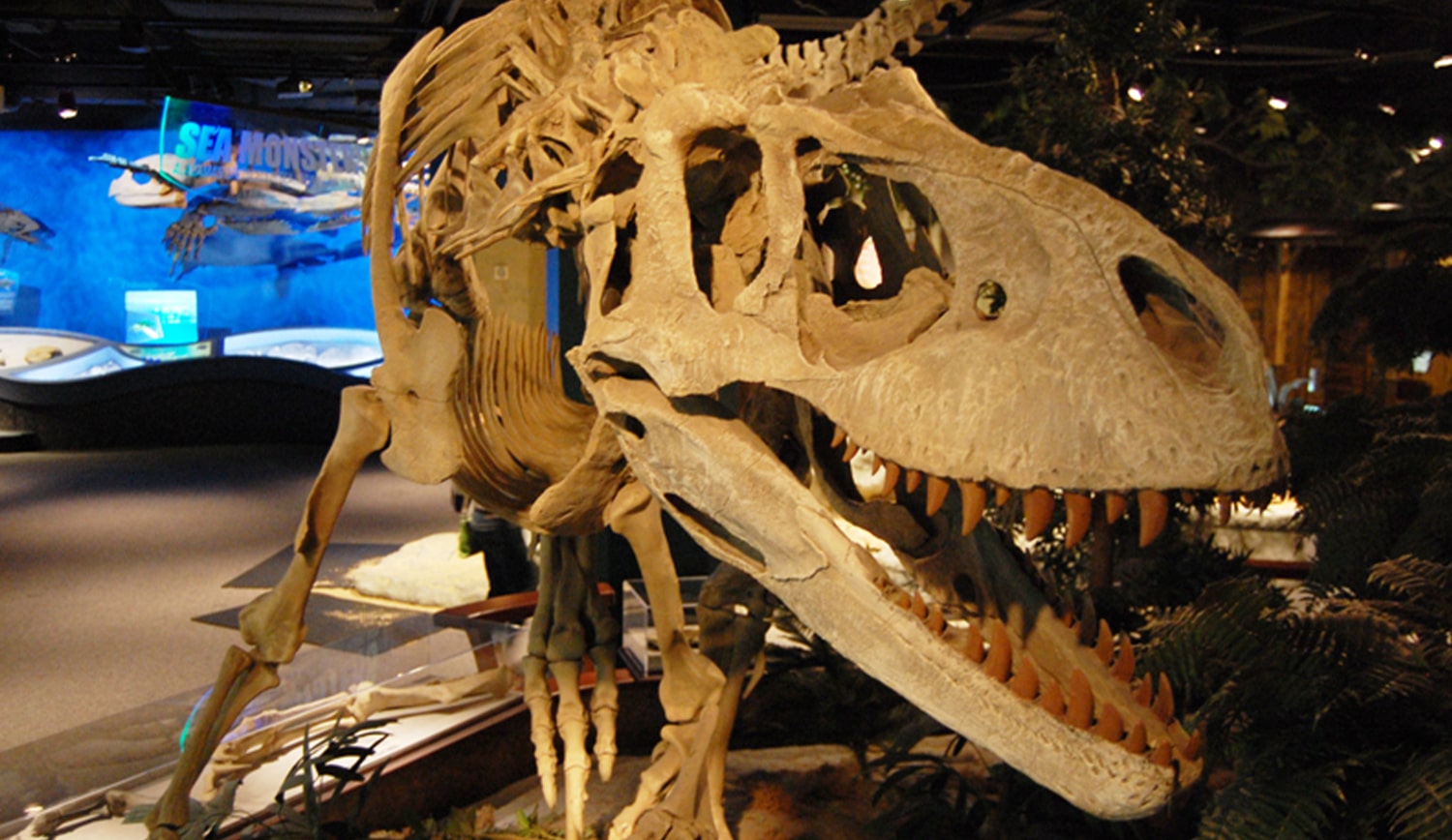
Lower Level

World of Water Aquariums
Did you know McWane Science Center is home to 4 unique aquarium display tanks? Showcasing our world’s oceans and lakes, as well as our very own Cahaba River, the World of Water gives you the chance to see more than 50 marine and freshwater species in carefully crafted habitats.

Shark & Ray Touch Tank
The Shark & Ray Touch Tank is reopening November 13th. Meet our sharks and rays and check out their refreshed habitat. Some of the changes you can see and some you may not. For example, you will not be able to see the deep cleaning and repairs we did to the filtration. Repairs were made under the sand layer to help move the water to and from the filters. Back of house filters were deep cleaned and the sand in the sand filter was replaced. The Touch tank is open during normal business hours!
Level One

Rushton Theater
The 108-seat Rushton Science Theater is a state-of-the-art multimedia learning environment capable of hosting almost any type of program imaginable. When you visit Rushton, don’t be surprised if you encounter extraordinary fires or massive bolts of lightning! Don’t worry, though—we’ve got everything under control.
Rushton Science Theater is home to our largest presentations, including McWane’s very own Tesla coils, which you can see in action during our Lightning Strikes! program. Our Tesla coils feature two coupled resonant electric circuits, and we welcome visitors to come and see them on display throughout the day.
The theater is also home to a Van de Graaff Generator, an electrostatic machine that uses a moving belt to accumulate very high voltages on a hollow metal globe. Applications for these high-voltage generators include driving X-ray tubes, accelerating electrons to sterilize food and process materials, and accelerating protons for nuclear physics experiments.

Science Quest
The first floor of McWane Science Center is jam-packed with amazing interactive exhibits where guests can see and experience science in action!
Don’t miss out on…

Bubble Room
Dive right into the Bubble Room, where you can discover the science of suds. Try your hand at making all kinds of bubbles you didn’t even know were possible—we’re talking square bubbles, triangular bubbles, and more. See it for yourself in this one-of-a-kind space!
Level Two

Alabama Dinosaurs
The Explore! Lab is devoted to hands-on exploration of geology, paleontology, anthropology, and zoology. Learn how to classify feathers, butterflies, rocks, shells, and more. Take an interactive role in the scientific method with our computer stations. Develop your microscope skills. Touch fossils, skeletons, and rare minerals. There’s so much to do at McWane Science Center!

NatureScope
Explore the great outdoors inside the museum with McWane Science Center and the Birmingham Audubon Society! Learn the science of birds and bugs in the Audubon cabin and demonstration stage, where visitors can enjoy nature programs and live animal shows.
Check out the collection of Alabama birds, including a bald eagle, wild turkey, two extremely rare ivory-billed woodpeckers, and even a skull from the extinct dodo bird.
Then, get up close and personal with some resident creepy crawlies. Learn about the role insects play in our ecosystem in the decomposition chamber. Or, jump right in and meet our bugs, including a Tarantula and Madagascar Hissing Cockroaches!

Itty Bitty Magic City
The Birmingham Children’s Museum Itty Bitty Magic City caters to our youngest visitors! Kids in Kindergarten and younger can engage a love of learning through four major types of play: physical play, exploratory play, constructive play, and imaginative play.
Itty Bitty Magic City features:
We offer daily programming and special classes as well as teaching activities and presentations. View our Events Calendar for scheduling and program information!

Science on a Sphere®
NOAA’s Science on a Sphere® (SOS) is a display system that uses computers and video projectors to project planetary data onto a 6-foot diameter sphere, analogous to a giant animated globe. Researchers at NOAA developed SOS as an educational tool to help illustrate Earth System science to people of all ages. Watch atmospheric storms, climate change, and ocean temperatures move and flux like you’ve never seen before!
